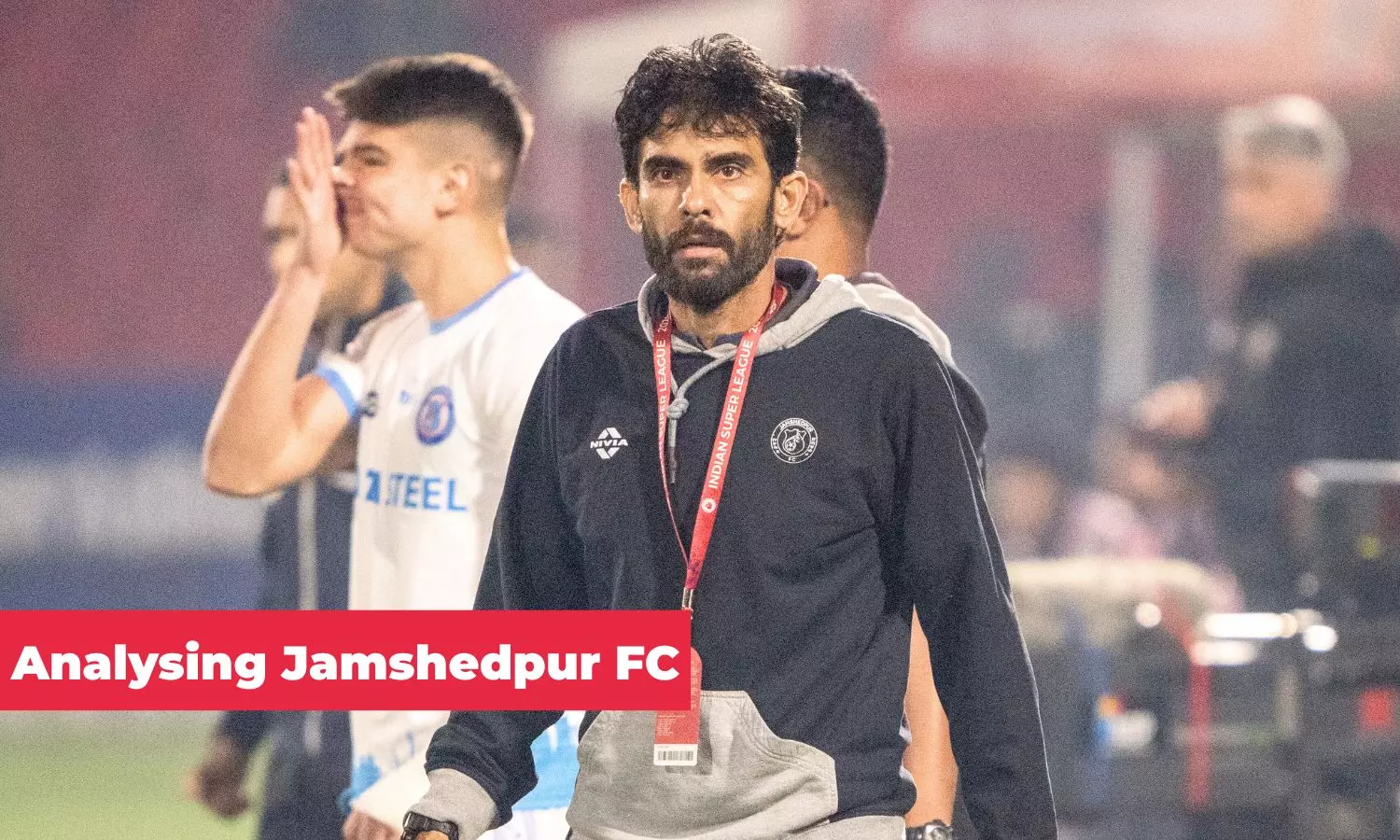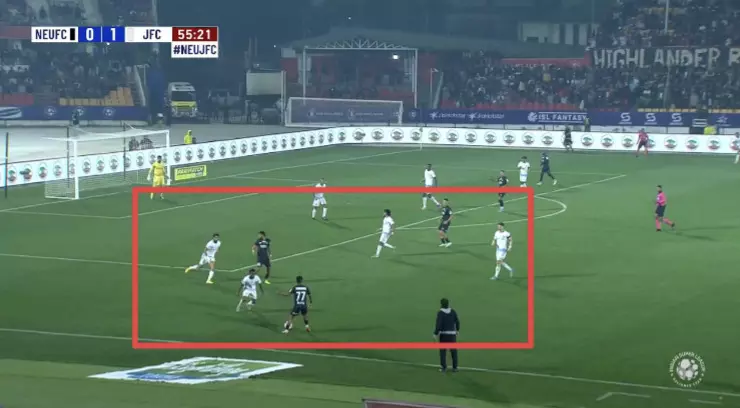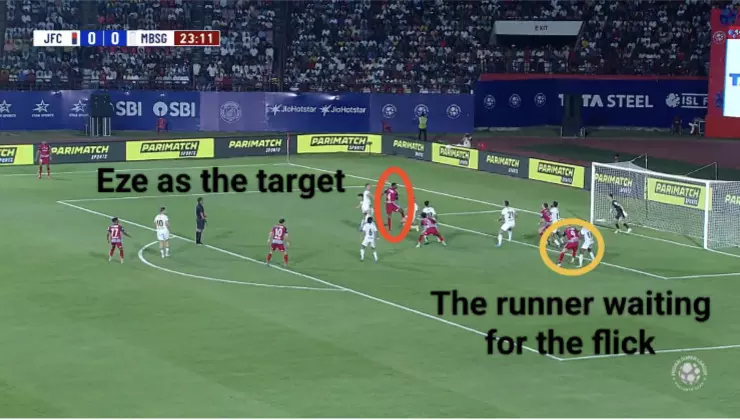Football
Decoding Jamshedpur FC: A look into Jamil’s tactical setup
How Khalid Jamil turned Jamshedpur FC into ISL's dark horses. A deep tactical dive.

Khalid Jamil (Photo credit: FSDL)
Khalid Jamil’s historic run with Jamshedpur FC in the 2024-25 Indian Super League came to an end in heartbreak at the Salt Lake Stadium. A 94th-minute stunner by Apuia secured Mohun Bagan’s spot in their third consecutive ISL final, knocking out Jamshedpur 2-3 on aggregate in the semi-final second leg.
While Mohun Bagan had the firepower and momentum, it was Jamil's tactical ingenuity that took a squad with limited expectations to the brink of a final. He became the first and only Indian head coach to guide a team to the ISL semi-finals — a remarkable feat that solidifies his status as a pioneer for Indian managers.
Jamshedpur FC reached the semi-final of the ISL Playoffs, earning them the moniker “The Dark Horses of the ISL” this season. Credit goes to Khalid Jamil for rallying his troops.
What started as another season to be written off turned into a cinematic comeback — with Jamshedpur racking up wins through what purists would call “negative, boring football.” But one word defines it better: effective.
He wins. At the end of the day, his team scores more than the opposition. For neutrals, Jamil’s team doesn’t offer the high-octane pressing game or the silky-smooth passing of Lobera’s Odisha. But what he does bring is a watertight defence and the ability to convert chances. His ‘mundane’ football has delivered results at Tata Nagar, forcing fans and experts alike to sit up and take notice.
In this article, The Bridge analyse Jamshedpur FC’s knockout and semifinal matches against Mohun Bagan SG and NorthEast United FC, revealing how Khalid Jamil strategizes and marshals his resources, ensuring a remarkable transformation.
Out of possession: the 4-4-2 shape
Teams often adopt formations that align with their starting lineup or adjust based on specific spaces or opponents that need to be marked.
Jamshedpur FC typically employs a 4-4-2 shape, with Jordan Murray and Javier Hernandez as the front two forwards. The team forms two banks of four and maintains a compact, passive structure.
The front two are instructed to preserve the shape without pressing aggressively, allowing the opposition to play into their defensive setup.
Once the play enters Jamshedpur's half, they press intensely to regain possession. Against NorthEast United FC, Jamshedpur's double pivot was tasked with marking the in-possession double pivot to prevent build-up through the center of the pitch.
Defensive transition
The period between losing possession and defenders repositioning is known as the defensive transition.
When NorthEast United FC initiated counter-attacks with three players moving forward, Jamshedpur FC ensured five defenders were at the back (four defenders and one from the double pivot), creating numerical superiority even during counter-attacking situations.

In the 4-4-2 formation, the central two midfielders, known as the double pivot, operate differently from conventional setups.
Rei Tachikawa is allowed to advance further up the pitch when Jamshedpur has the ball, while Mobashir Rahman stays back as a safeguard.
In case Jamshedpur loses possession, Rahman's primary role is to slow down or tackle the opposition player in control of the ball.
The spare man concept
With nearly five players at the back, Jamshedpur FC effectively creates numerical superiority, resulting in a spare man who acts as a safety net for any teammate beaten in a one-on-one situation.
NorthEast United FC, featuring Néstor Albiach as a false nine dropping between the lines, allowed Alaaeddine Ajaraie to cut inside and function as a quasi-striker, while Samte advanced to play as a quasi-left winger.

Despite facing four attackers, Jamshedpur's spare man strategy helped neutralize NorthEast United's offensive threats to a considerable extent.
Executing the deep block
Khalid Jamil's setup was straightforward: take the lead, concede possession, and allow the opposition to dominate the ball while his team blunts their attacks.
Jamshedpur FC employed a deep block, positioning their defensive line centrally to ensure goalkeeper Albino Gomes was well protected. One method to break this deep block is to switch the ball to the flanks and deliver crosses.
However, Jamshedpur would shift their defensive line horizontally to the corresponding flank, creating a numerical advantage. For instance, they often achieved a 4v2 advantage in such situations.

Jamshedpur FC prefers long balls over short build-ups in possession, with Jordan Murray as the target. This approach aims to keep the ball as far away from their goal as possible, minimizing risk.
Playing out of the press and third man combinations
Jamshedpur FC effectively creates a field tilt by pushing players to one side of the pitch, forcing the opposition to overload that area and preventing JFC from gaining numerical superiority. This tactic draws players away from central areas, allowing for crosses to strikers with minimal opposition or enabling quick switches of play to catch the opposition off guard. JFC employed this strategy multiple times against NorthEast United FC.
When NorthEast United FC lost possession, they attempted immediate counter-pressing to regain the ball. In the ensuing chaos, Jamshedpur FC required a quick outlet to escape the pressing players.

They utilized third-man runs, where a third player, unmarked by the two involved in the initial play, makes a run behind defenders to act as an outlet and relieve pressure. For example, Mohammed Sanan executed such a third-man run effectively.
Another method to create space involves quick one-touch passes between two players. Rapid ball movement leaves defenders with little time to adjust, creating opportunities for attackers.
Set pieces
In 2015, FC Midtjylland hired a throw-in expert, resulting in 40% of their goals coming from set pieces.
Set pieces, including throw-ins, corners, and free kicks, remain an underutilized aspect of football. Jamshedpur FC has capitalized on this, scoring 17 goals from set pieces this season, second only to Mohun Bagan in the ISL.
Jamshedpur FC features a player capable of delivering angled throw-ins, and Stephen Eze, standing at 198 cm (6 ft 8 in), is one of the tallest players in the ISL.

Using Eze as a target draws 4-5 defenders, as seen against Mohun Bagan Super Giant. This attention allows other players to make runs behind Eze at the far post, anticipating a flick-on and tapping the ball in.
Jamshedpur FC showed that one doesn’t need to play breathtaking football to be successful. By sticking to the basics and maintaining balance between defence and attack, Khalid Jamil masterminded a playoff run that India will remember.
While opposition coaches will surely develop counters to Jamil’s system in the coming seasons, for now, he’s ridden the wave to its crest — and given Indian coaches a tactical identity to be proud of.

